“Republic of Thirst” is a three-part series made possible by a generous fellowship from the Robert Novak Foundation. Part 1 of this series explored current debates about the allocation of California’s scarce water resources. Part 2 explored whether the water supply could be expanded by building new reservoirs. Part 3 explores whether California might alleviate its chronic water shortages — which could become even worse in the future — by “creating” new water resources, using desalination and recycling. (Further acknowledgments appear below.)
The cold, wet, snowy winter of 2018-2019 turned out to be an inauspicious time to write about California’s chronic water shortages.
Relentless storms across the state in January 2019 brought the Sierra Nevada snowpack to 119 percent of the April 1 average, and the rain and snow only continued: some areas reported their snowiest February ever.
Still, scarcity is never more than one dry winter away in California, even if it is out of the public mind for the moment.
While the winter rains drenched Northern California, and snows fell heavily on ski resorts in the Sierra Nevada, water authorities, both urban and rural, sued the California State Water Resources Control Board (SWRCB) over its Bay-Delta plan (described in Part 1 of this series).
The SWRCB’s order under the plan would force users of water from the San Joaquin River valley to reduce their consumption so that the river and its tributaries could achieve 40% of “unimpeded flow” during the spring months, ostensibly to save fish populations.
Rather than adopt a voluntary approach, favored by local water authorities as well as incoming Governor Gavin Newsom, SWRCB chair Felicia Marcus — a former attorney for the National Resources Defense Council, a leading environmentalist group — imposed the plan, along with a majority of the board. (Newsom replaced her last month with “moderate” Joaquin Estevel, who also voted with Marcus and the majority.)
As for water storage, the prospect of new plans — such as raising the height of the Shasta Dam — seemed to dim with the new Democratic majority in the U.S. House of Representatives. New “progressives,” led by first-year Rep. Alexandria Ocasio-Cortez (D-NY), supported a “Green New Deal” that sought to move the entire U.S. economy to 100% renewable energy sources by 2030 — but”renewables” pointedly excluded hydroelectric power from dams, which use water to generate electricity but do not consume it, leaving it available for other uses.
That leaves two options for dealing with chronic water scarcity in California: conservation, and “creation.” The state’s residents could learn to live with radical reductions in water use, such as those contemplated by a new, non-binding state target for indoor water usage of 55 gallons per person per day, announced in 2018.
Alternatively — or, in addition — the state could also use new technologies to convert sea water, filtered sewage effluent, agricultural runoff, or other non-potable sources of water into potable water.
Given that droughts tend to recur — and predictions by climate change activists that droughts will be even more frequent in the future — it might seem that desalination and other methods of creating fresh water would provide a solution.
Yet policymakers in California had largely overlooked these options — until new technological advances.
The Pacific Institute, a water policy think tank, noted in 2016:
As of May 2016, there are nine active proposals for seawater desalination plants along the California coast, as well as two additional proposed plants in Baja California, Mexico that would provide water to southern California communities. This is down from an estimated 21 proposed projects in 2006 and 19 in 2012. Since 2006, only two projects have been built: a small plant in Sand City with a capacity of 300,000 gallons of water per day and a much larger 50-million-gallon per day plant in Carlsbad.
In addition, the seven-year 2012-18 prompted Santa Barbara, California, to bring an existing desalination plant back online. The Charles E. Meyer desalination plant was built in the early 1990s, during the last major drought, but was mothballed in 1992. The severity of the drought in the Central Coast region prompted public officials to reopen it. Today, it supplies “3,125 acre-feet of water annually or about 30 percent of the City’s demand,” the city says.
In 2018, the California Department of Water Resources awarded $34 million in grant money to eight desalination projects across the state. The money was drawn from Proposition 1, a water bond passed in 2014 by California voters. Two of the projects are focused on “brackish” water. “California has plenty of salty inland water, such as the water in the upstream Delta or in underground aquifers that have absorbed soil salts,” Bay Area public radio station KQED noted at the time.
Desalination technology owes a great deal to Israeli innovation — or, rather, an American-Israeli partnership. As Seth M. Siegel documents in his 2015 book, Let There Be Water, U.S. President Lyndon B. Johnson reached out to Israeli Prime Minister David Ben-Gurion in the 1960s to work together on desalination research. Early Israeli efforts used a method that separated salt from frozen sea water sprayed into a vacuum, but it proved too expensive.
Later innovations were created by American innovators like Sidley Loeb, a pioneer in reverse osmosis (RO), who found support in Israel. RO uses membranes that water can pass through but that other constituents cannot. Loeb, Siegel recounts, proved his technology in the Central Valley town of Coalinga, California. But it was in Israel that his invention took off in earnest, inspiring a new generation of desalination technology in use in today’s plants.
RO made desalination cheap enough to convince the Israeli government to build several desalination plants, the first of which opened in the southern city of Ashkelon in 2005. “From nearly zero a decade ago,” Siegel wrote, desalinated water “…would now be the equivalent of ninety-four percent of Israel’s household water.” It was not the only answer — indeed, it was effective because it was one of several water strategies — but it was transformative: “Israel now has the confidence that regardless of population growth or the water needs of its economy, Israelis will not have to worry about water.” The country even delivers water to some of its Arab neighbors, keeping relations steady in turbulent times. Moreover, Israel and its state-founded company, Israel Desalination Engineering (IDE), has become the recognized global leader in desalination technology and can sell and export that knowledge abroad.
One of IDE’s current projects is the Charles E. Meyer plant, located on a two-acre plot of land between downtown Santa Barbara and the beach.. City officials agreed to give me a tour of the facility, which is owned by the city with a contract with IDE to operate the plant.
As noted above, the plant was reactivated in response to the historic 2012-18 drought, which left the Central Coast particularly desperate for water. Construction to reactivate the plant began in 2015, and operations resumed in 2017.
Joshua Haggmark, Water Resources Manager for the city, met me at the facility and walked me through it. The plant currently produces about three million gallons of water per day (MGD), though it is designed to be expanded to a capacity of 10 MGD if necessary.
Its intake pipe runs a half mile out to sea, and utilizes a special wedge wire screens that minimize “entrainment and entrapment” of marine life. The speed at which water flows into the intakes is half a foot per second or less — which is slower than the ocean currents. The speed equates to about 1/10 the speed of someone walking.
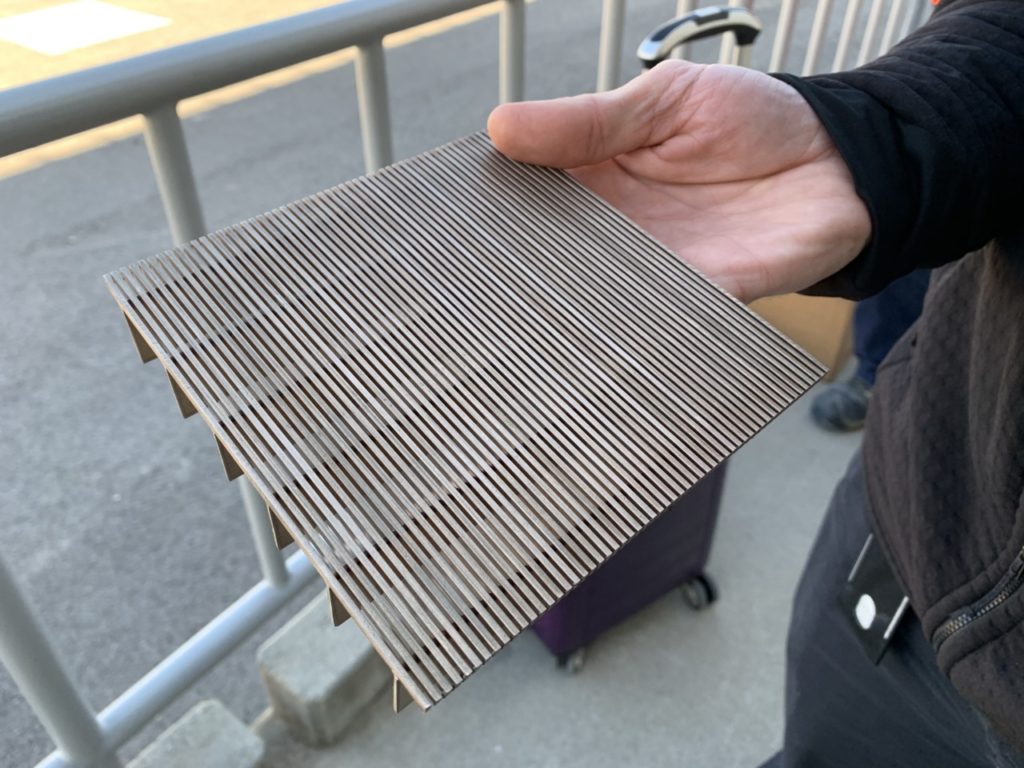
Wedge Wire Screen at Charles E. Meyer Desalination Plant, Santa Barbara, California, February 19, 2019 (Joel Pollak / Breitbart News)
Once the water arrives on shore, coagulants are added to the water to initiate particles in the water clumping together. The water is then filtered through a traditional media filter, consisting of anthracite, gravel, and sand, which is similar to that used to treat drinking water coming from lakes and rivers. The RO system used by the plant is sensitive, and is primarily designed to separate salt from the water, although it is also effective in removing any bacteria and viruses. The effectiveness of the media filters before RO is critical: anything more than salt will quickly clog the RO membranes.
The RO system itself consists of stacks of long tubes, each of which contains a spiral of fibrous membrane around a central channel that only the pure water will reach.
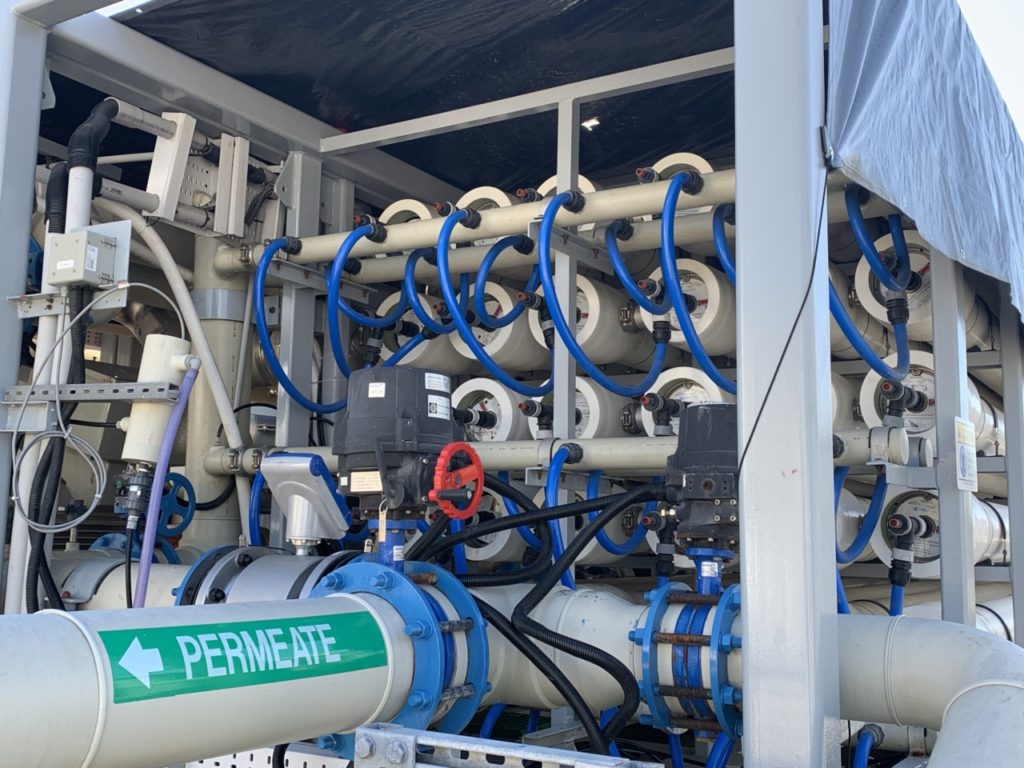
Reverse osmosis tubes at the Charles E. Meyer Desalination Plant, Santa Barbara, California, February 19, 2019 (Joel Pollak / Breitbart News)
Pushing the seawater through the RO membranes is the most energy-intensive part of the process, with a large pump operating at the front of each of the facility’s seven stacks.
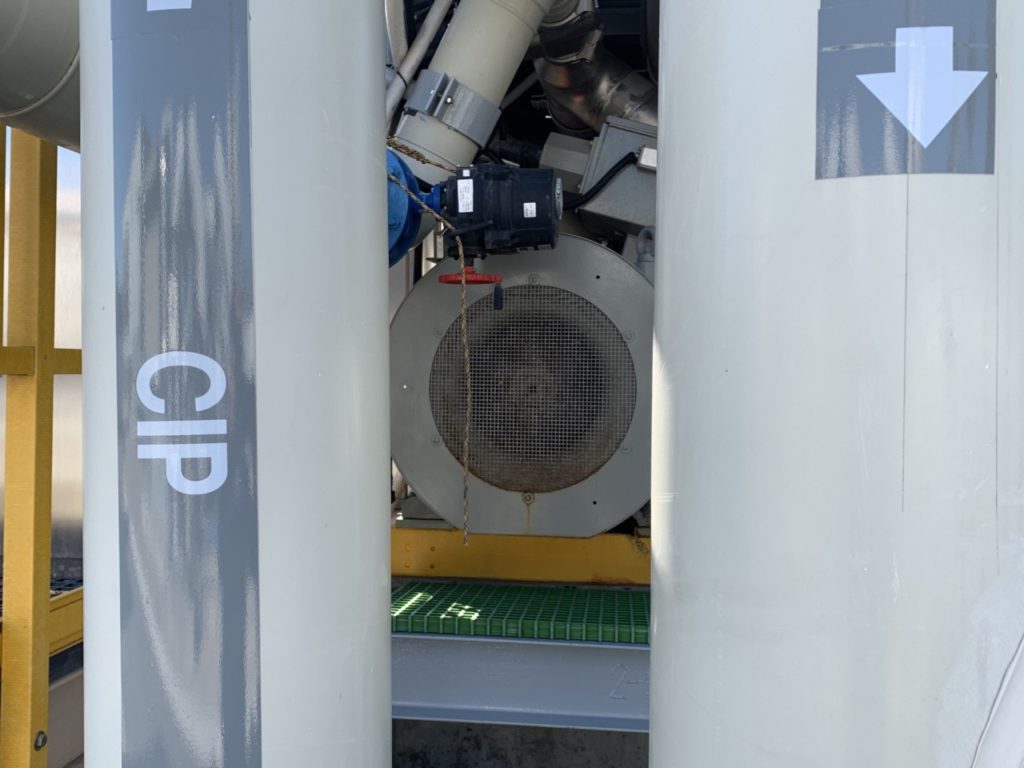
Charles E. Meyer Desalination Plant Pump, Santa Barbara, California, February 19, 2019 (Joel Pollak / Breitbart News)
Water flows through the RO membranes under pressures exceeding 700 pounds per square inch. The pure water — referred to as permeate — flows out through the middle of the membranes and to a large permeate holding tank. The rest – referred to as the brine — continues along the outside of the membranes and flows out through a separate system.
About half the seawater that enters the process is made into drinking water — meaning the other half becomes brine, which is twice as salty as normal seawater. Minerals and chlorine are then added to the permeate to more closely match local drinking water quality and insure the water remains safe in the City’s distribution system.
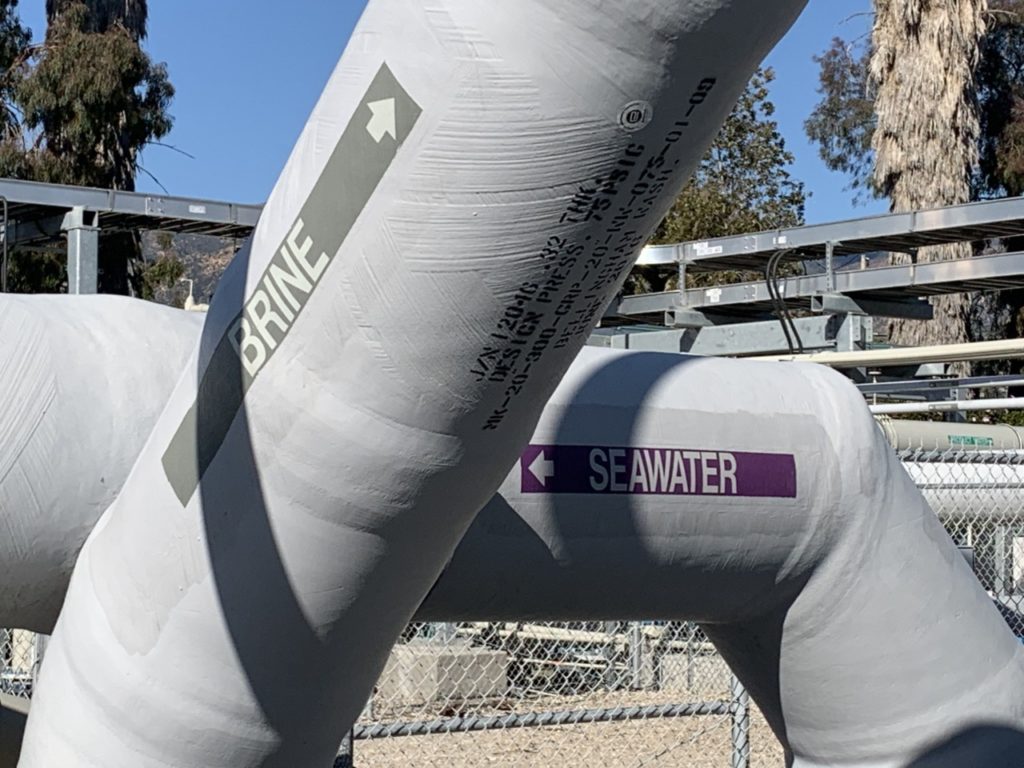
Seawater in, brine out at the Charles E. Meyer Desalination Plant, Santa Barbara, California, February 19, 2019 (Joel Pollak / Breitbart News)
The brine — three million gallons per day — is then sent across the street to the wastewater treatment plant where it commingles with the treated wastewater just before it makes its mile and half journey back to the ocean. The upgraded facility uses special machines to transfer the energy in the brine to incoming seawater. That innovation has cut the energy consumption of the plant some 40% from the original design, Haggmark said.
The brine is then mixed with six million gallons per day of treated wastewater. The resulting mixture mimics the salinity and density of seawater — the proverbial “sweet spot,” Haggmark says. That water is pumped a mile and a half out to sea and then released safely into the environment. The permeate — drinking water — is added into the rest of the city’s water system. The entire process — from the ocean to the customers takes one-and-a-half hours, according to IDE.
Theoretically, Haggmark told me, the city — with a population of about 93,000 — could supply 100% of its water needs from the desalination plant. However, the city’s approach calls for a diverse water supply portfolio: utilizing local surface water, which traditionally provided all of the city’s water before the 1990s; state water; groundwater; recycled water for landscaping, and — most promising for the future, he says — advanced treatment of recycled wastewater or potable reuse, which he says will one day be purified to drinkable standards and added to the city’s water system, once regulations catch up to technology.
Thanks to improved conservation, Haggmark told me, the city uses the same amount of water today that it did in the 1950s — with half today’s population. Moreover, the city has set a goal of powering the desalination plan with 100% renewable energy — solar and wind energy — by 2030. Already, the city obtains 40% of its energy from renewable energy sources, reducing its dependence on fossil fuels.
As a matter of cost, desalination remains one of the most expensive option for Santa Barbara, with operating costs of $1,400 per acre-foot. By contrast, recycled wastewater costs $1,200 per acre-foot; state-provided water costs $1,000-$2,000 per acre-foot (depending on how much is available in a given year); local reservoir water is $400 per acre-foot; and groundwater is $200 per acre-foot. But desalination, he explained, is crucial to the whole portfolio. It is like a conservative stock, or a bond: expensive, but with a reliable return.
The following day, I visited the Claude “Bud” Lewis Desalination Plant in Carlsbad, California, in San Diego County. At 50 million gallons per day, the plant is the largest desalination facility in the Western Hemisphere.
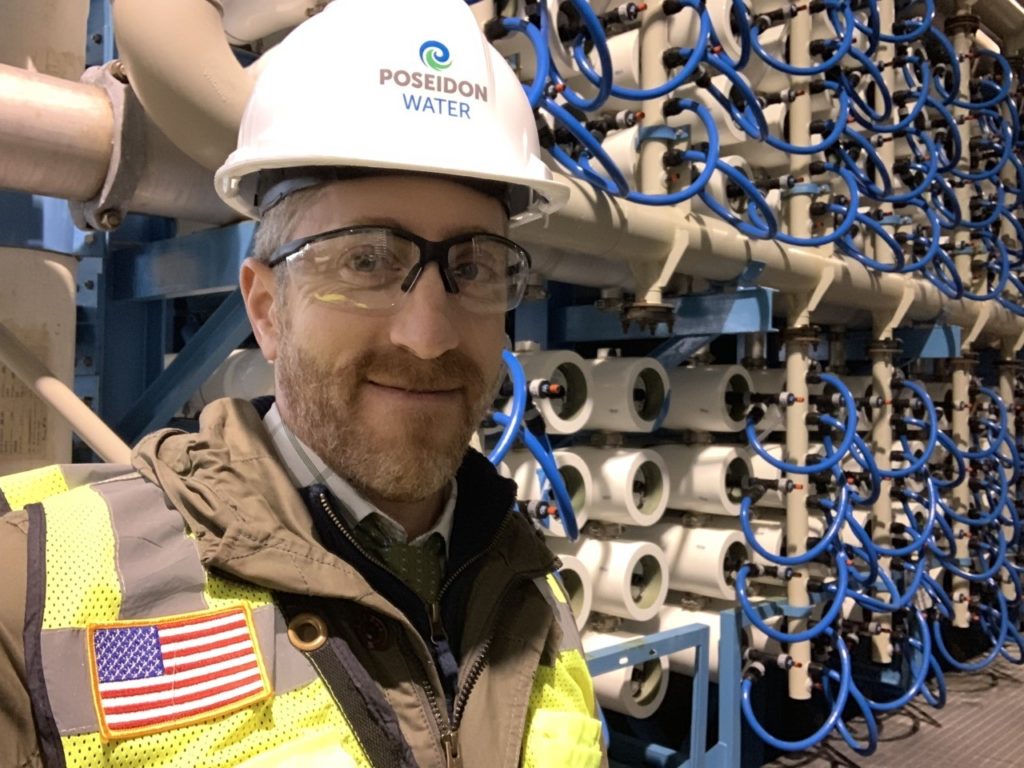
Joel Pollak at Claude “Bud” Lewis Carlsbad Desalination Plant, February 20, 2019 (Joel Pollak / Breitbart News)
The plant opened in December 2015, and has provided some 43 billion gallons of water since then to communities in San Diego County. Its daily output can support 400,000 households, and supplies 10% of San Diego’s needs.
Like the Santa Barbara plant, the Carlsbad plant is operated by the Israeli firm IDE. But unlike the Santa Barbara plant, which is owned by the municipality, the Carlsbad plant is owned by a Boston-based company, Poseidon Water, a small firm with only 22 employees.
Poseidon has a contract to provide the San Diego County Water Authority with between 48,000 and 56,000 acre-feet of water per year, which the authority is required to purchase at a fixed rate of $2200 per acre-foot. At the end of 30 years, the municipal water authority can purchase the facility for the grand sum of $1. It also has the option to buy the facility (at market value) after ten years, in 2025. The facility is a successful example of a private-public partnership that benefits the public and investors alike.
The Carlsbad plant operates in much the same way as the Santa Barbara plant — at a much larger scale. In Carlsbad, the plant uses the outflow pipes of an old, decommissioned natural gas plant nearby. These pipes only stretch a few hundred yards into the ocean, unlike the pipes at Santa Barbara, but the impact on the environment is similarly minimal. Water comes into the facility after passing through a lagoon, which is constantly replenished with sea water and sustains a large mussel-farming operation that supplies restaurants around the world.
As in Santa Barbara, the water is filtered through anthracite, sand, and gravel, using coagulants to help settle the particulates. Periodically, the filters are “back-washed” to dislodge the particulates, which are taken to a landfill.

Filter at Claude “Bud” Lewis Desalination Plant in Carlsbad, California, February 20, 2019 (Joel Pollak / Breitbart News)
After additional filtration through a special fiberglass filter, the seawater then enters the RO array. Each RO unit is about a foot in diameter, and the semi-permeable membranes are made of layers of special paper with tiny holes, each one one-millionth of the diameter of a human hair.
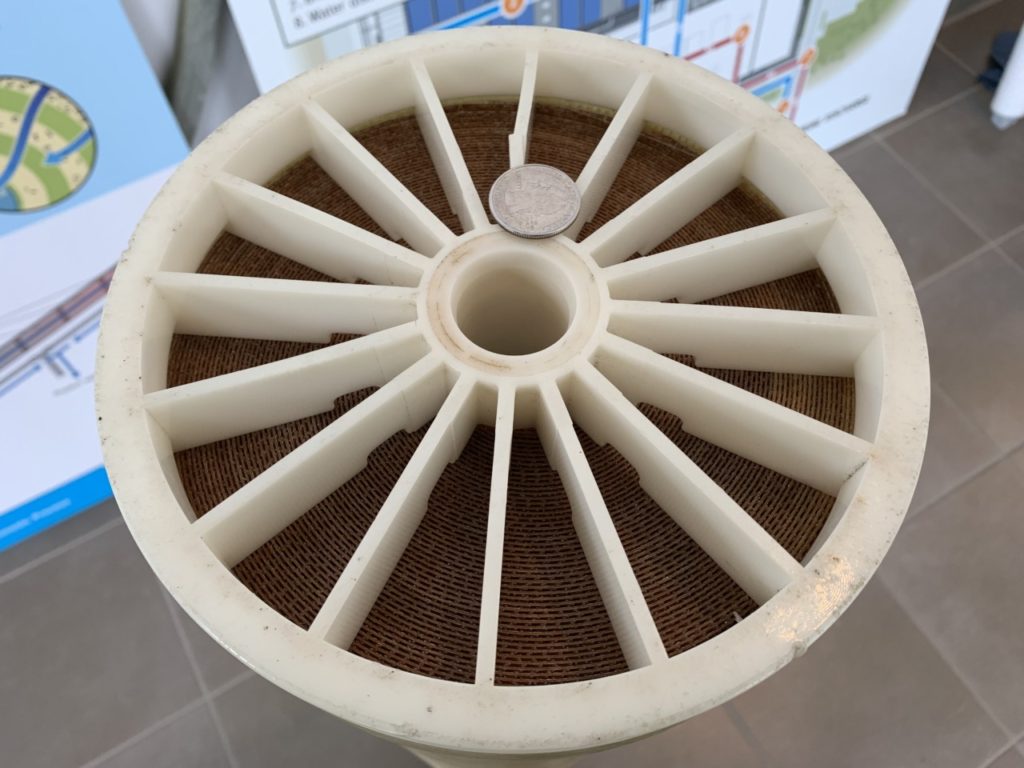
Reverse Osmosis Tube at Claude “Bud” Lewis Carlsbad Desalination Plant, February 20, 2019 (Joel Pollak / Breitbart News)
Water is pumped through them at a pressure of about 900 pounds per square inch (psi). The membrane tubes are placed end-to-end, eight in a row, and they are periodically rotated so that the first ones do not wear out too quickly. Each filter lasts about eight to ten years.
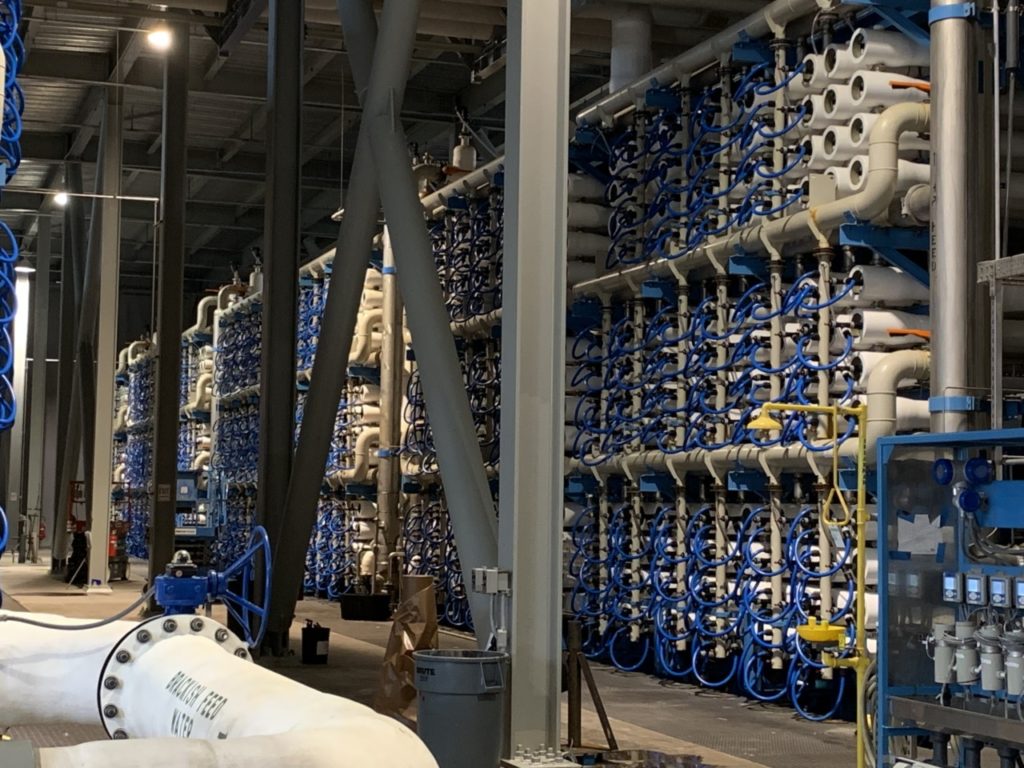
Reverse Osmosis Tube Array at Claude “Bud” Lewis Carlsbad Desalination Plant, February 20, 2019 (Joel Pollak / Breitbart News)
As in Santa Barbara, the pure water — the permeate — is pumped through blue hoses into tanks, and the brine is pumped out to sea. In Carlsbad, the brine is mixed with extra seawater, not with treated wastewater effluent, to dilute it.
The permeate, again, is too pure for consumption — or even for delivery: were it to be pumped out of the plant in pure form, over time it would leach minerals from pipes, accelerating water main breaks in the water distribution system. (It would, if drunk to excess, also remove minerals from a human body.) Therefore minerals must be added to it.
First, the water is infused with recycled carbon dioxide, which helps with dissolving the minerals. Then it flows through limestone to add calcium carbonate. Boron and bromide are removed, and chlorine and fluoride are added. Then the water is drinkable and ready to be pumped into the water authority’s aqueduct. The total time for the entire process is about two hours, and from intake to tap — at the distribution center in San Marcos — is three hours.
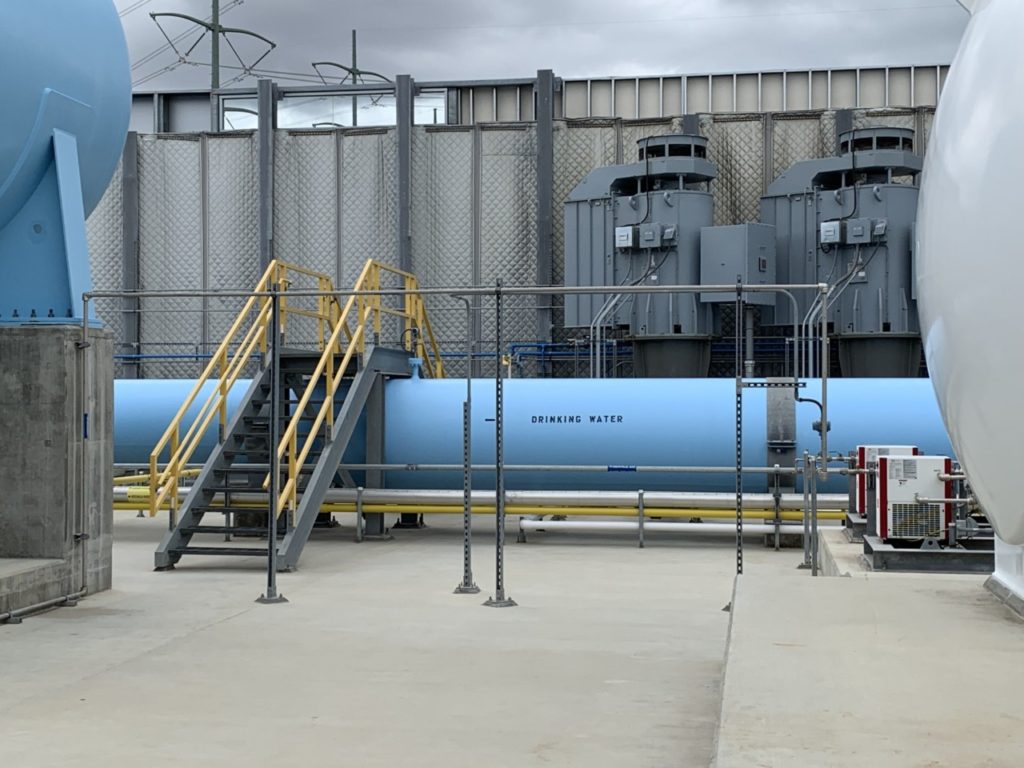
Drinking Water Pipe at Claude “Bud” Lewis Carlsbad Desalination Plant, February 20, 2019 (Joel Pollak / Breitbart News)
The capacity of the six-acre plant could, theoretically, be expanded to 60 million gallons of water per day, thanks to technological advances that make the RO membranes more efficient. As in Santa Barbara, the Carlsbad plant uses energy recovery devices that transfer the pressure of the brine outflow (about 800 psi) to the incoming seawater. That enables the plant to operate using 46% less energy than would otherwise be the case.
The plant boasts that it is “carbon-neutral,” partly through the use of the energy recovery devices; and partly through the use of solar panels to provide local power; purchasing carbon offsets; and planting trees in fire-ravaged areas of San Diego County; for which the plant receives carbon credits from the state. The energy for the plant comes from natural gas, though not from the new station built across the Interstate 5 freeway, but rather from a distant plant. Electricity is provided through the local municipal wholesale provider. In the event of a power failure, the plant maintains three “surge tanks” that act as a cushion against drinking water flowing back downhill towards the plant.
Jessica Jones of Poseidon Water, who guided me through the facility, noted that the cost of desalinated water is more expensive than other sources — even at a half-penny per gallon. But she noted that it only takes 30% more energy to produce than the water imported into the county from the state water project. And Poseidon projects that at some point in the near future desalinated water will actually be cheaper than imported water, and the public sector will see those savings. Moreover, the desalinated water is 100% drought resilient, meaning it is always available, theoretically, even in dry years.
Even skeptics of desalination admit that it is a reliable source of water, albeit an expensive one: the oceans will not dry up or become noticeably saltier. But environmentalists object that the brine that is returned to the oceans causes local environmental damage. Moreover, they argue, the energy-intensive process requires more fossil fuels to be used — even if smaller plants, like the Santa Barbara project, are trying to find renewable energy substitutes.
As I explored debates over desalination, many of the experts I consulted seemed just as excited — if not more so — by the possibility of recovering wastewater for use by households as well as agriculture and industry.
The eleven plants of the Sanitation Districts of Los Angeles County “produce approximately 135 million gallons of recycled water each day,” according to the county, of which about 94 million gallons are beneficially reused, with some 60% of that used to recharge groundwater.
The process was demonstrated to me at the Sanitation Districts’ San Jose Creek Water Reclamation Plant in Whittier.
First, wastewater is treated using a physical process that allows solid matter to settle to the bottom of tanks.
Next, the water is moved into a series of tanks that use naturally-occurring microorganisms to break down the organic matter in the waste. The tanks are aerated using ambient air (or, at enclosed plants, pure oxygen) to speed up the process. Then ammonia in the water is removed through a process using specially chosen microorganisms that convert the ammonia to nitrates, and then — through an anoxic process — to nitrogen gas that is released.
After several hours, this “secondary” treatment produces water that is so clean that it is safe for bathing.
A third, tertiary stage is then used to filter the water through anthracite, sand, and gravel. It is then disinfected.
The water treated through a tertiary process is ready to be recycled.
Some is discharged directly into the San Jose Creek, and thence to the San Gabriel River.
Some is directed directly to consumers, such as a nearby golf course. The vast majority — some 86 percent — is routed to groundwater recharge facilities — vast basins where the treated water can re-enter the underground aquifer.
Years, or decades, later, that water will be removed, treated, and used.
Solid waste in the system continues south via sewage pipes to the Joint Water Pollution Control Plant (JWPCP) in Carson, closer to sea level, where a similar treatment process but without ammonia removal or filtration. The JWPCP also handles a higher percentage of industrial wastewater, and includes special processes that reduce odors from air emitted by the treatment plant.
The Sanitation Districts add that the treated water at Carson “is too salty to reuse without further treatment and is currently released into the ocean.”
But that may change, in just over a decade.
The Metropolitan Water District of Southern California has partnered with the Sanitation Districts in a new project to test the feasibility of treating and reusing a large percentage of the county’s water that is currently discharged to sea.
I was the first reporter to be allowed a look at a new demonstration project called the Advanced Purification Center, which, when operational, could result in a full-scale recycled water plant that would purify up to 150 million of the 250 million gallons per day that flow through the JWPCP.
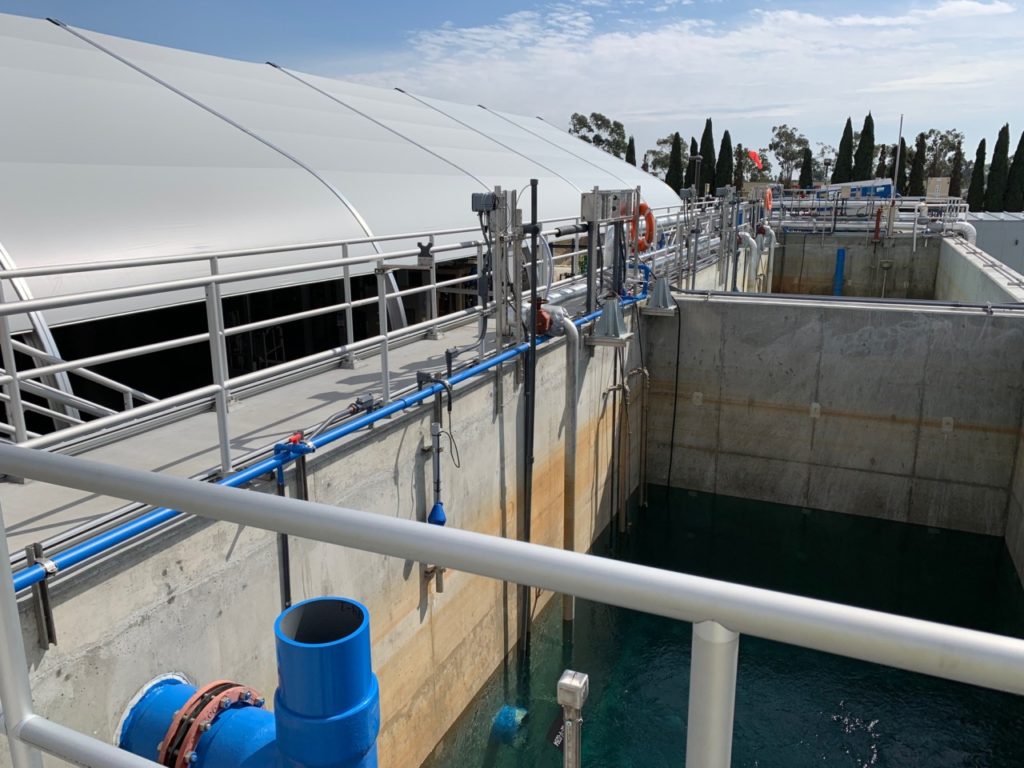
Metropolitan Water District Advanced Purification Center, Carson, California, February 26, 2019 (Joel Pollak / Breitbart News)
The test facility, where construction began in 2017, will be completed later in 2019. It will purify about half a million gallons of water from JWPCP per day, using a special process that first uses microorganisms to remove ammonia and other nitrogen compounds from the water; then uses advanced filters to remove microorganisms and solids; and finally uses RO membranes to purify the water, just as in a desalination plant.
The process is less expensive and less energy-intensive than desalination, because the treated water, while too salty for immediate use, is only about a tenth as salty as sea water.
Once proven, the plant could be expanded — and, officials told me, could be operational in 11 years, if all went as planned and the state approved all of the necessary permits.
What representatives from both the Sanitation Districts and the Water District stressed, above all, was the fact that they were working in partnership — and working well.
It was a sharp contrast to the acrimony I had experienced, six months before, when studying the debate over the Bay-Delta Plan, and suggested to me that where technological solutions can be found to expand the supply of available water, Californians can work together well, despite all of the competing jurisdictions and interests.
That requires leadership at the top — but perhaps more than that, it requires the patient efforts of inventors, entrepreneurs, engineers, and managers who do the quiet, often unheralded work of keeping thirst at bay.
Acknowledgements: I would like to acknowledge the generous assistance of The Fund for American Studies and the guidance of Daniel McCarthy. I would also like to thank a number of other individuals, especially Katy Grimes of the California Globe; Robert Dolezal of the California Water Alliance; Johnny Amaral of Westlands Water District; James Pinkerton of Fox News; and Rebecca Mansour of Breitbart News. Special thanks are also due to others who provided special assistance with particular articles – Part I: Stanislaus County Supervisor Kirsten Olsen and her colleagues; and farmer Nadav Ichaki; Part II: Rep. Tom McClintock (R-CA) and his staff; Jim Watson, general manager of the Sites Project Authority; Part III: Jessica Jones of Poseidon Water; Ann Heil and Basil Hewitt of the Sanitation Districts of Los Angeles County; Mariana Cruz and Joshua Haggmark of the City of Santa Barbara; and Kevin Perkins of HashtagPinpoint. I also wish to thank my wife, Julia, and family. Many others deserve acknowledgment — and some declined to be named. All are greatly appreciated for their support.
Joel B. Pollak is Senior Editor-at-Large at Breitbart News. He is a winner of the 2018 Robert Novak Journalism Alumni Fellowship. He is also the co-author of How Trump Won: The Inside Story of a Revolution, which is available from Regnery. Follow him on Twitter at @joelpollak.
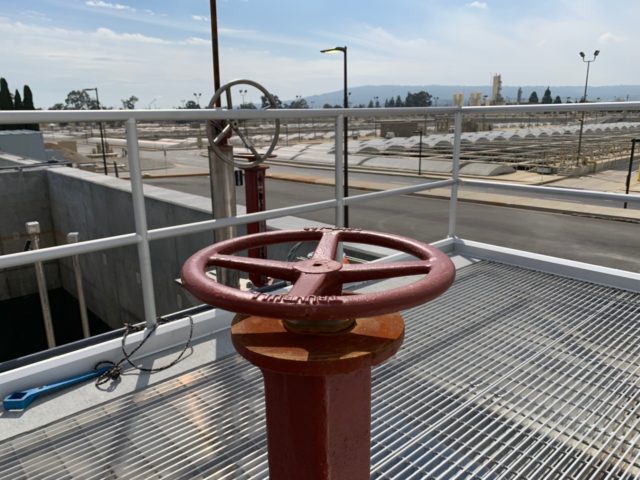
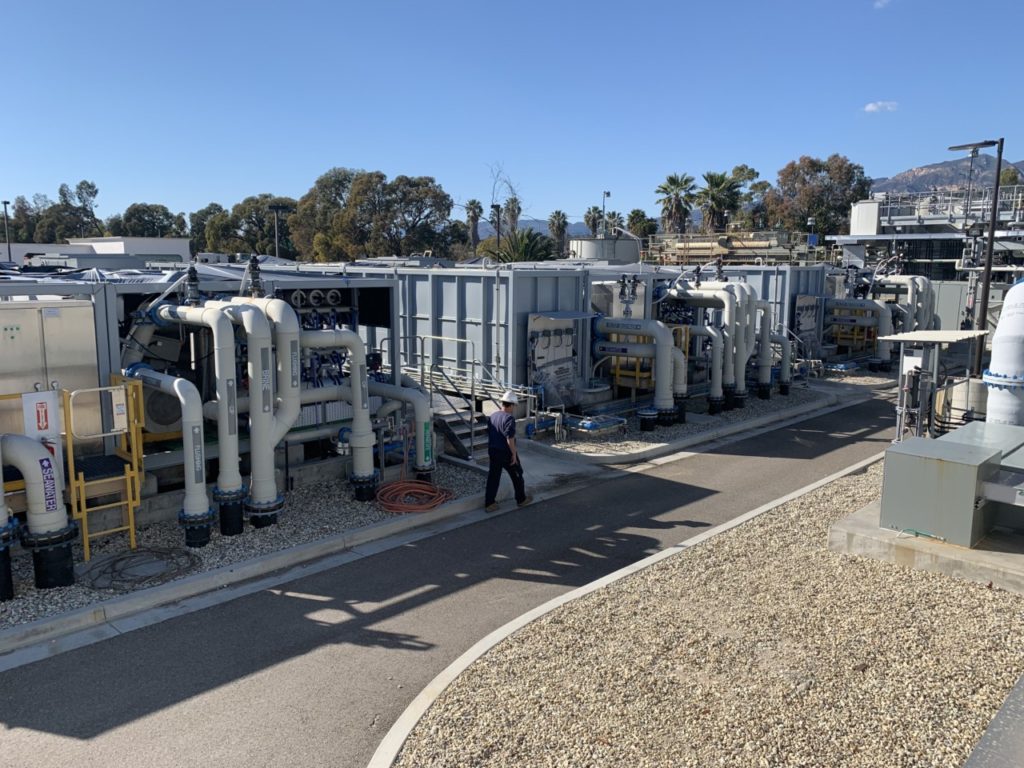

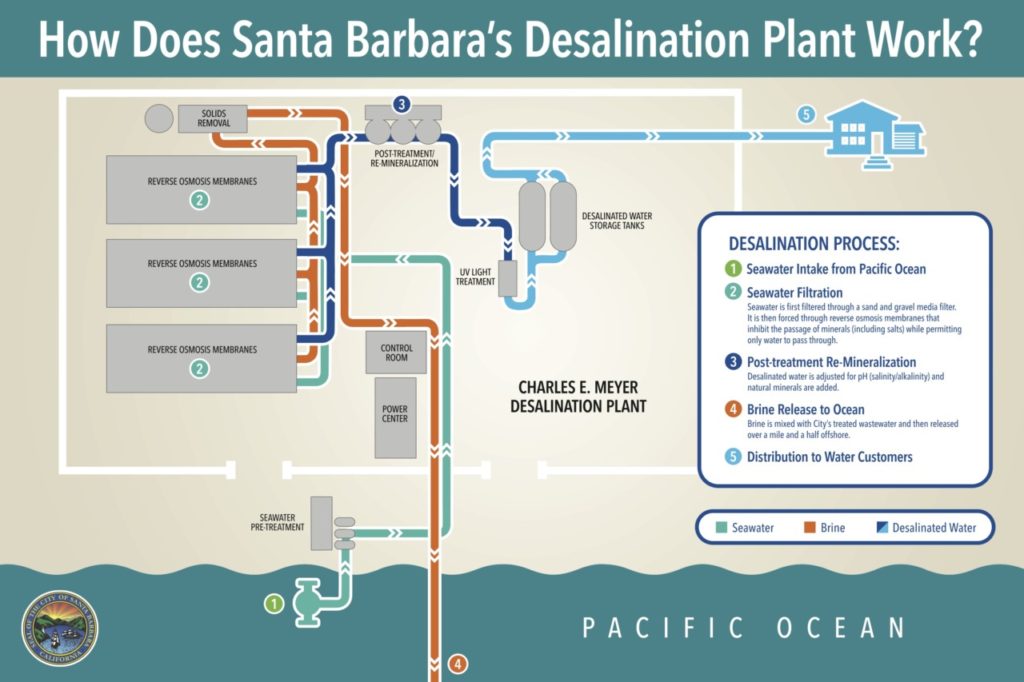
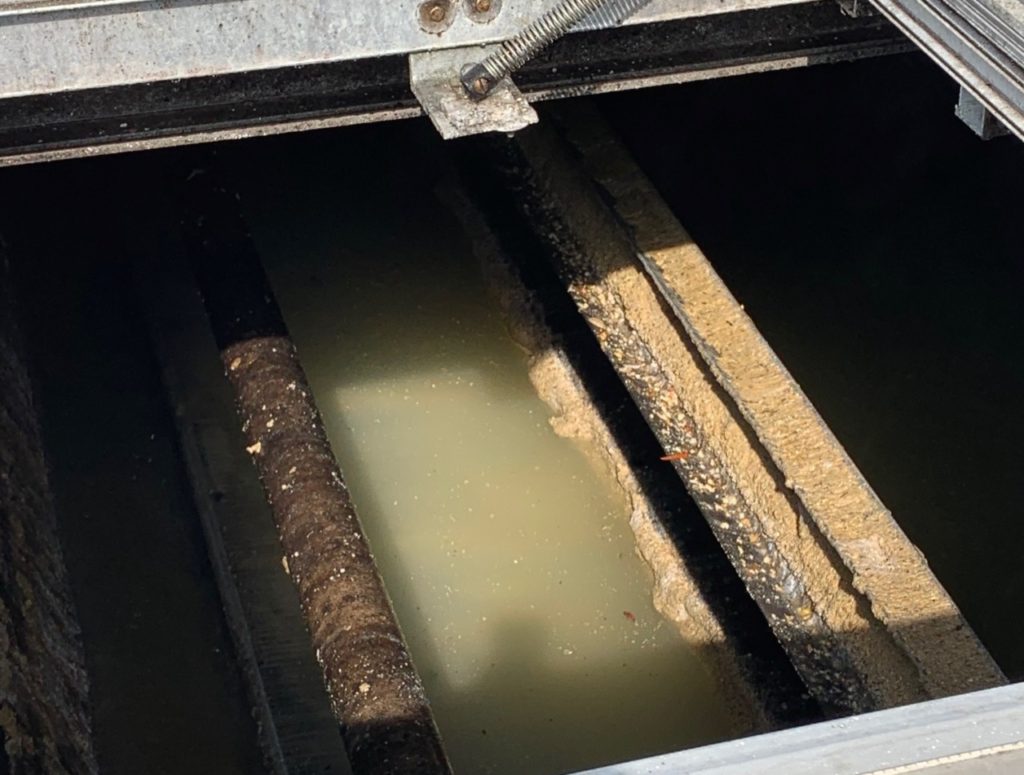
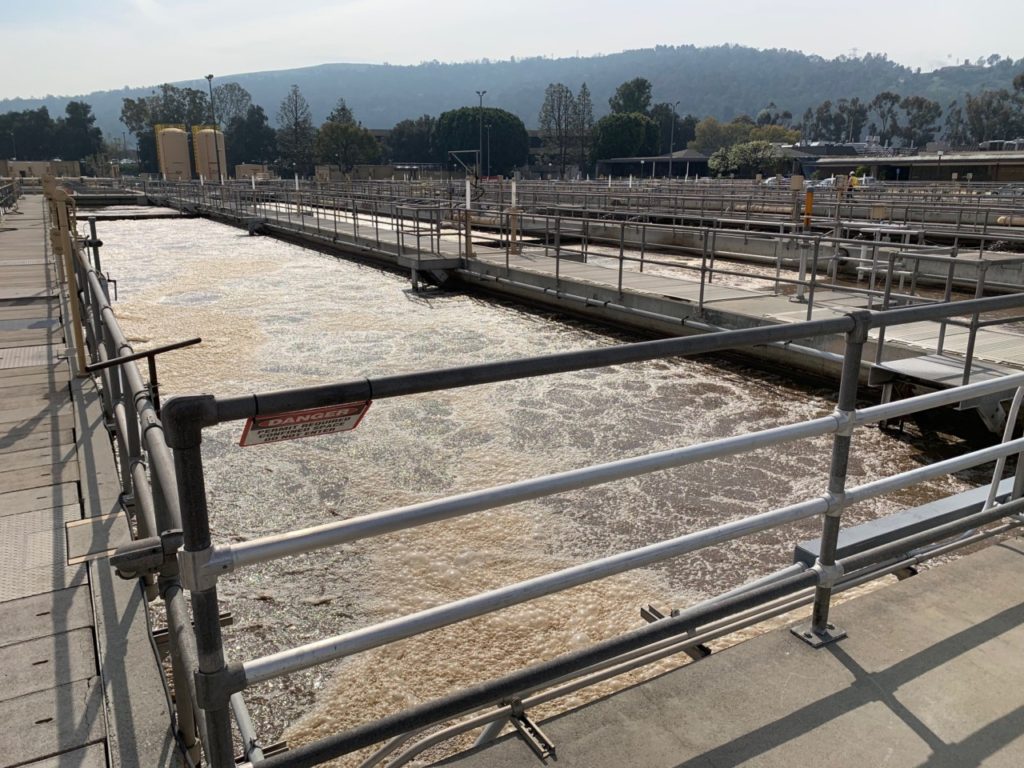
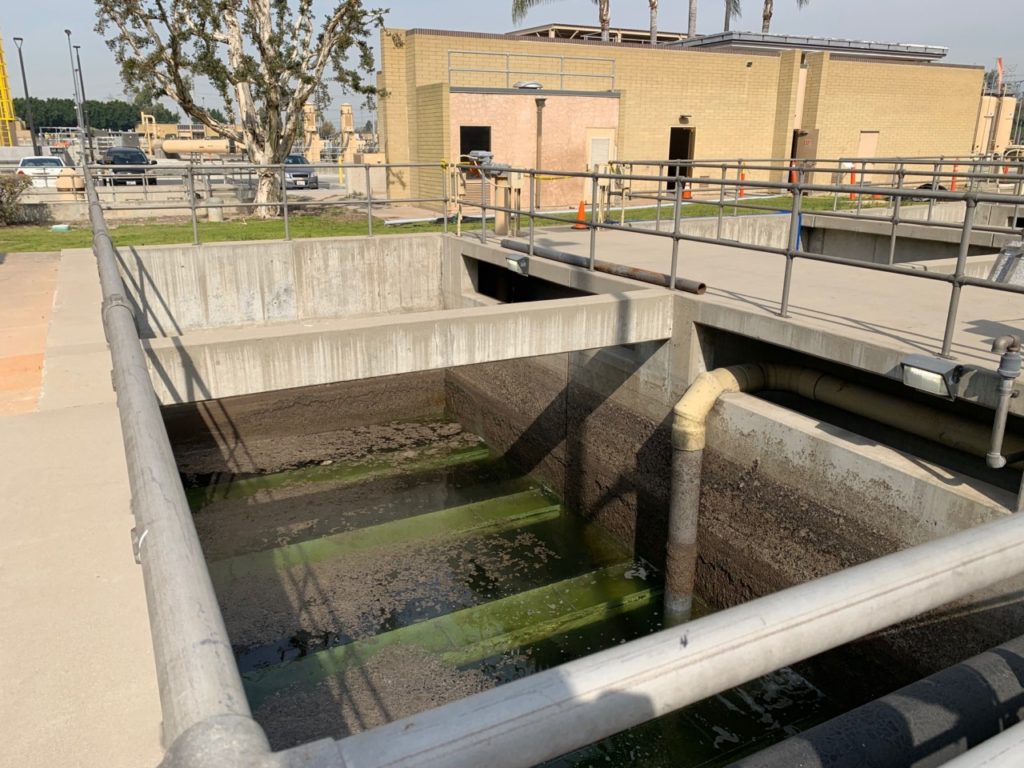
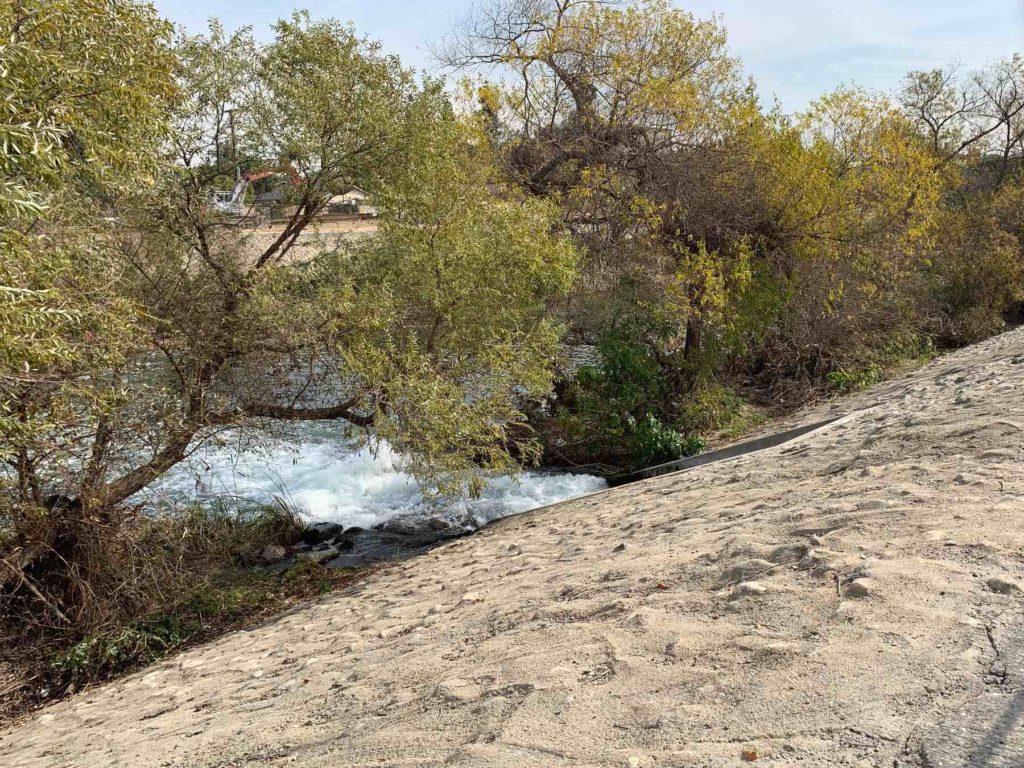
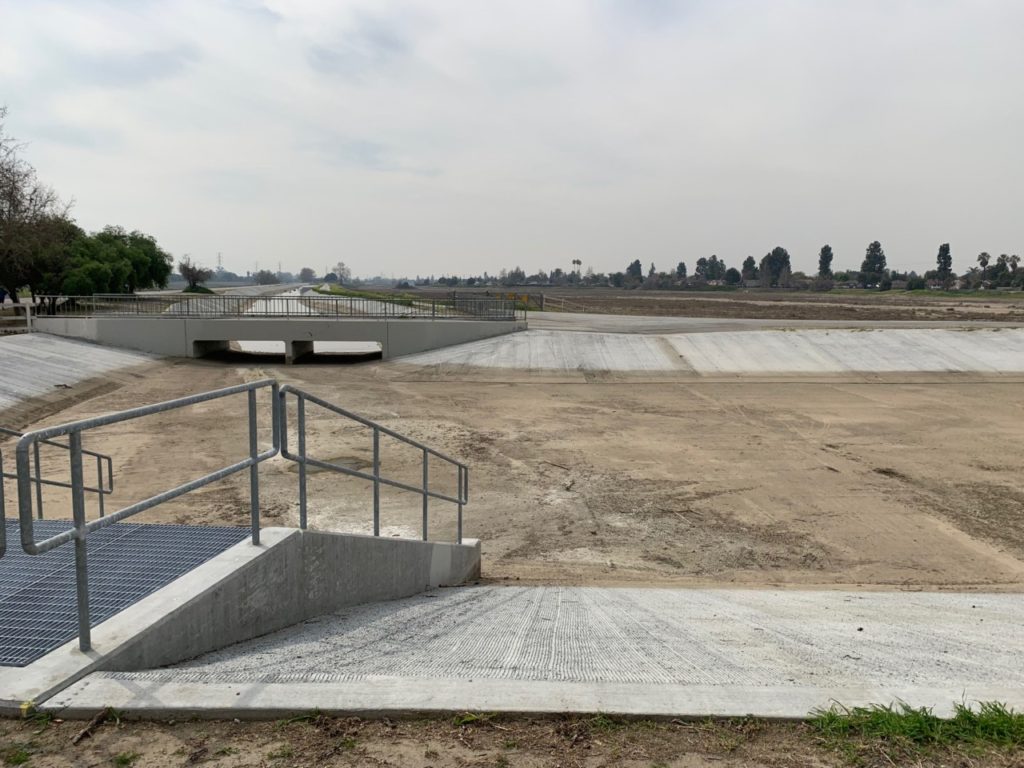
COMMENTS
Please let us know if you're having issues with commenting.